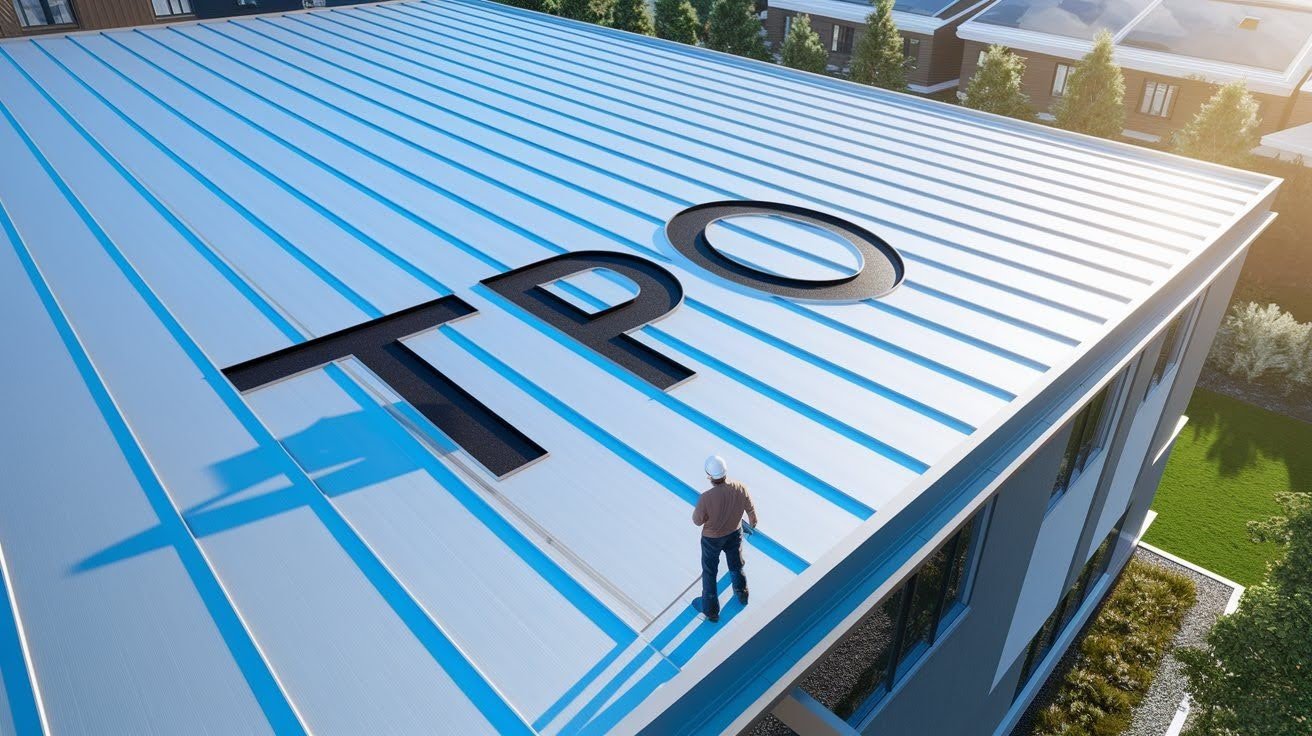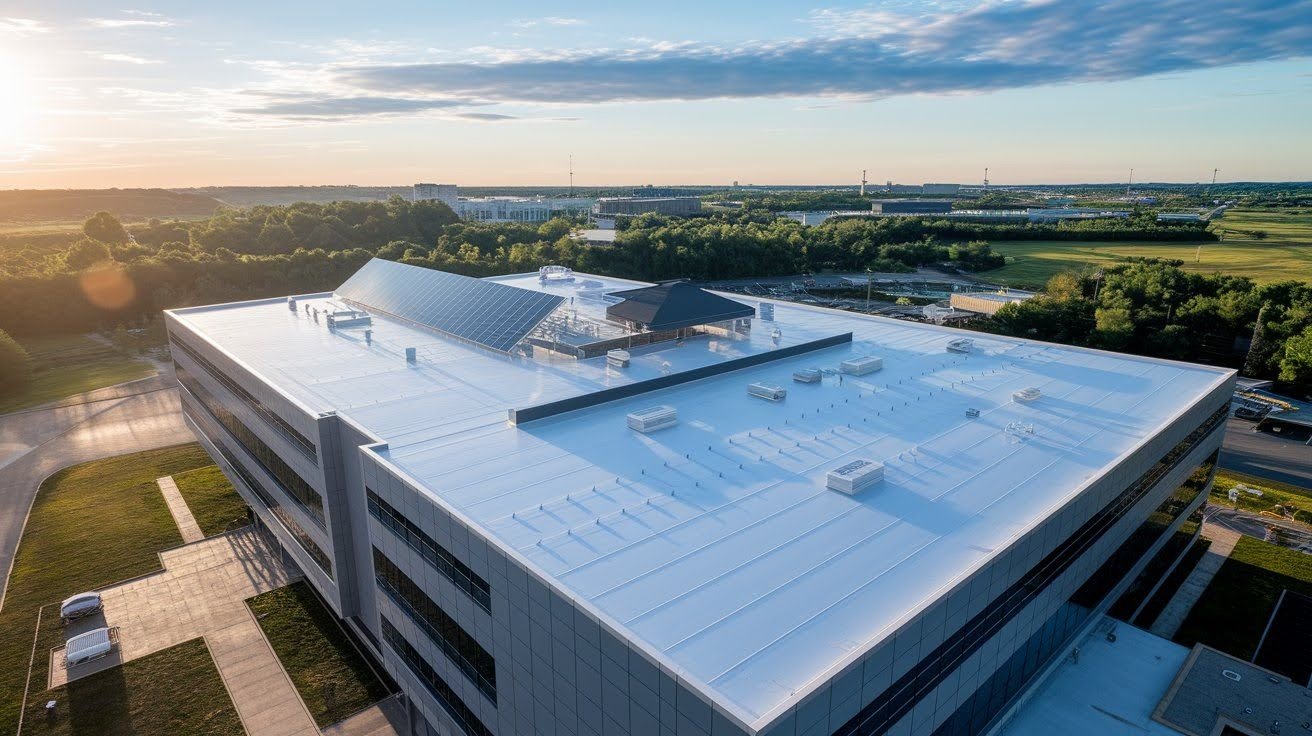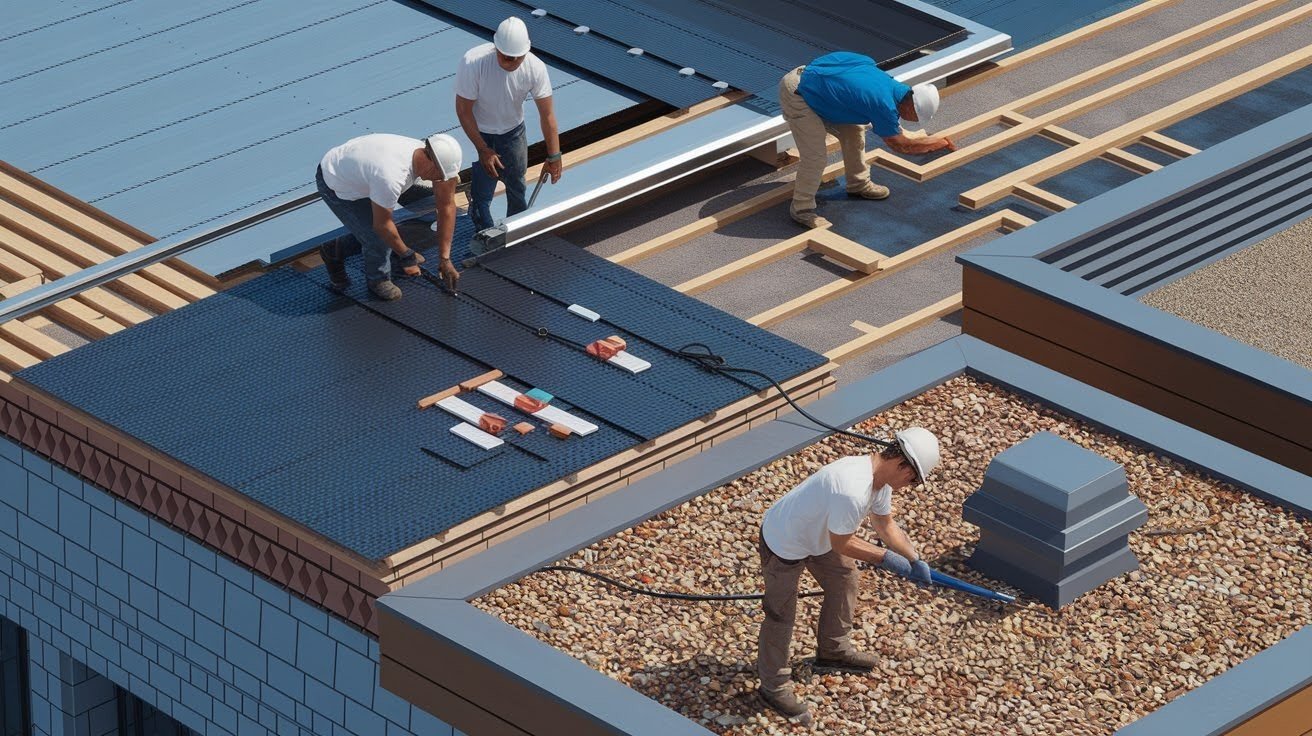Ever wonder what those bright white roofs are on commercial buildings? They’re TPO roofs, and knowing what TPO means could save you big money on your next roofing project.
TPO stands for Thermoplastic Polyolefin – a popular roofing material that’s taken over the commercial market.
This guide explains everything about TPO roofing. You’ll learn what makes it special, why contractors love it, and if it’s right for your building. We’ll cover costs, installation, and problems to avoid.
With 15+ years installing commercial roofs, we’ve watched TPO become the industry standard. Our real-world experience helps you make smart roofing decisions.
Let’s solve the TPO mystery and get you the facts you need.
What Does TPO Stand For?

TPO means Thermoplastic Polyolefin. Thermoplastic can be heated and reshaped multiple times. Polyolefin is a type of synthetic polymer material.
TPO was introduced in the early 1990s as a roofing innovation. It’s a single-ply roofing membrane system made of synthetic materials and reinforcing layers, designed for flat commercial roofs.
How TPO Roofing is Made

TPO roofs have three layers that work together. The bottom layer is a TPO polymer base for a structural foundation.
The middle layer contains polyester-reinforced scrim for strength and stability. The top layer is TPO TPO-compounded surface for weather protection.
Sheets come in widths of 8-20 feet with standard 50-100 foot lengths.
Why TPO Became Popular in Roofing

TPO took over the commercial roofing world fast. It now holds 40% of the market share according to the National Roofing Contractors Association.
This roofing system became one of the fastest-growing options available. TPO was developed as an improvement over existing rubber and PVC systems, offering better performance and cost-effectiveness for building owners.
Types of TPO Installation Methods

You have four main ways to install TPO roofing. Mechanical attachment fastens directly to the roof deck. Ballasted systems use gravel or pavers.
Plate bonding secures with adhesive plates. Full adherence completely glues to the substrate. Fleeceback TPO uses urethane foam adhesive.
Heat-welded seams create permanent waterproof bonds for long-lasting protection.
Insulation Options for TPO Roofs

You need good insulation under your TPO roof. The right choice depends on your budget and performance needs for your specific building requirements.
Polyisocyanurate (Polyiso)
This is the most popular insulation for roofs. It costs more but gives you better R-value performance.
Polyiso has an excellent thermal efficiency rating, making it the preferred choice for most commercial roofing applications across the industry.
Expanded Polystyrene (EPS)
EPS gives you the highest R-value per dollar spent. It’s used for roof, wall, and floor applications effectively. This insulation is good for ground contact situations because it doesn’t retain water over time, maintaining its insulating properties.
Extruded Polystyrene (XPS)
You’ll recognize XPS by its blue, green, or pink colors. Performance and price fall between Polyiso and EPS options.
XPS is semi-permeable with a perm rating of 1, making it suitable for various commercial roofing applications.
Key Benefits of TPO Roofing

TPO roofs offer real advantages for building owners. TPO is one of the least expensive commercial roofing materials available. Installation is easy and clean with less labor needed. It lasts 15-20 years typically, up to 30 with proper care. The bright white surface reflects heat and reduces cooling costs significantly.
Cost Factors for TPO Roofing
TPO costs between $6-12 per square foot in 2025. Average ranges are $5-10 for typical 20,000 square foot commercial roofs.
Current pricing faces material volatility throughout the year. Roof size, existing condition, access difficulty, insulation choice, membrane thickness, installation method, roof penetrations, and warranty type all affect your final investment cost.
Conclusion
Now you know the tpo roof meaning and why it matters for your building. TPO stands for Thermoplastic Polyolefin – a cost-effective, energy-saving roofing solution that’s taken over 40% of the commercial market.
You’ve learned about TPO’s three-layer construction, installation methods, and insulation options. With 15-20 year lifespans and excellent weather resistance, TPO offers great value for flat roof applications.
Ready to make your next roofing decision? You now have the facts to talk confidently with contractors about TPO systems.
Have questions about your specific roof situation? Share your thoughts in the comments below – I’d love to help you find the right solution.
Frequently Asked Questions
What does TPO stand for in roofing?
TPO stands for Thermoplastic Polyolefin. It’s a single-ply roofing membrane made from synthetic materials, introduced in the early 1990s. TPO is designed for flat or low-slope commercial roofs and serves as an alternative to traditional rubber and PVC roofing systems.
How long does a TPO roof last?
TPO roofs typically last 15-20 years with regular maintenance. With proper care and quality installation, some TPO roofs can last up to 30 years. The lifespan depends on factors like membrane thickness, installation method, and local weather conditions.
What does TPO roofing cost per square foot?
TPO roofing costs $6-12 per square foot in 2025, including materials and labor. For typical 20,000 square foot commercial roofs, expect $5-10 per square foot. Final costs depend on roof size, existing conditions, insulation choice, and the installation method selected.
Is TPO better than EPDM rubber roofing?
TPO offers several advantages over EPDM rubber roofing. It’s naturally white and reflective, reducing cooling costs. TPO has heat-welded seams instead of glued ones, creating stronger bonds. It’s also more resistant to punctures and generally costs less to install.
Can TPO roofing be installed over existing roofs?
Yes, TPO can often be installed over existing roofs if the structure is sound. This saves removal costs and reduces waste. However, a professional inspection is required to determine if your existing roof can support the new system and insulation layers.

